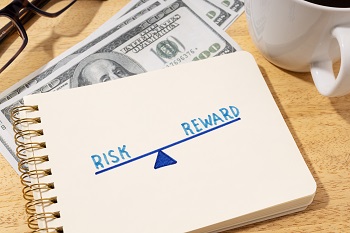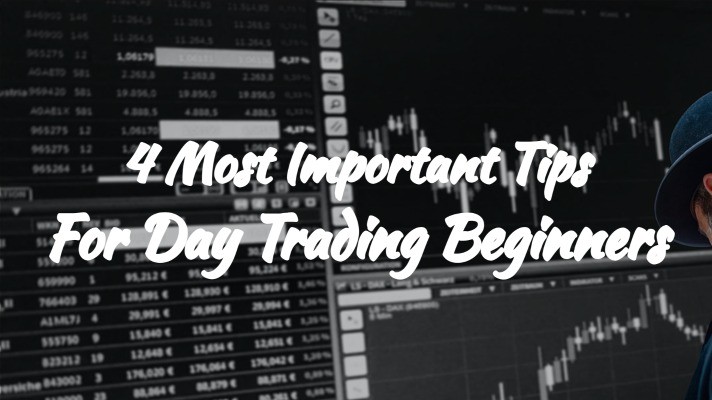Day trading is a risky business. There are times when you will succeed and make lots of money. But there are also times when you will lose all of your money. The best way to minimize the risks of day trading is to have the best risk-reward ratio for each trade you make.
Explore how to determine the best risk-reward ratio for day trading, among other components necessary to ensure you win more trades.
Risk Reward Ratio
The risk/reward ratio denotes the potential reward a trader can gain for every dollar invested relative to the amount they are willing to lose. Many investors utilize risk/reward ratios to contrast an investment’s predicted returns with the amount of risk required to attain those returns.
Take the following scenario: A venture with a risk-reward ratio of 1:9 indicates that the investor is ready to risk $1 in exchange for the possibility of earning $9. Put it another way, a risk/reward ratio of 1:5 indicates that a venture capitalist should consider investing $1 to make $5 in return.
Traders frequently use this strategy to decide which trades to place, and they derive the ratio by dividing the sum a trader risks losing if the value of an asset changes unexpectedly (the risk) by the level of profit the trader hopes to receive when the trade closes (the reward).
There have been misconceptions regarding the risk-reward ratio. The illusion is that for one to have better chances, they need to have a risk-reward ratio of 1:2. However, the risk-reward ratio on its own might not be a complete metric for predicting your trades. This metric becomes more relevant when you incorporate the win-loss ratio.
Win-Loss Ratio in Day Trading
Many day traders have more concern with their win rate or win/loss ratio. The enticement is that they will eventually reach a point when almost all of their deals are winners. Even though this looks to make logic, getting a greater win rate does not guarantee that you will be an effective or even lucrative trader.
Your win rate indicates how many transactions you gain out of all the trades you make. For instance, if you execute six trades per day and win four of them, your daily win rate is four out of six, or 60%. If you have 20 trading days in a month and win 70 out of 100 trades, your monthly win rate is 70%.
To calculate the win/loss ratio, you divide your wins by losses. Assume, for simplicity, that 60 transactions were winners and 40 were losses in the example. Your winning/losing percentage might be 60/40 = 1.5. That means you’re winning 50% of the time and more than losing.
A win/loss ratio greater than 1.0, or a victory rate greater than 50%, is desirable, but it is not a predictor of overall success. You may be winning, but if your losses exceed your winnings, you are not benefitting. Simultaneously, examine your risk/reward ratio.
Calculate the Risk-Reward Ratio

To compute the risk/reward ratio, determine the risk and the reward. The trader chooses both of these levels.
As determined by a stop-loss order, the risk is the total possible loss—the gap between the investment’s entry point and the stop-loss signal.
As determined by a profit target, the total potential gain is the reward. It is the stage when you put up security for sale. The overall amount you could earn from the trade is the reward. It is the distinction between the profit aim and the access point.
The risk/reward ratio expresses the relationship between these two numbers: risk divided by reward.
If the ratio is more than 1.0, the possible risk on the deal outweighs the potential gain. The potential profit is greater than the possible loss if the ratio is less than 1.0.
Risk-reward ratio formula:
Risk Reward Ratio= (Entry Point- Stop-Loss Point)/ (Profit Target-Entry Point)
If you purchase a stock at an entry point of $35.60 and then place a stop-loss at $34.50 and a profit target at 35.85, the risk/reward ratio is:
($35.60-$34.50)/ ($35.85-$35.60)= $1.10/$0.25= 4.4
The risk involved here is more than the potential gain. However, the ratio never goes this high unless investors use the reward/risk ratio reverse. In such a case, a ratio above one is much better.
How Risk Reward Ratio Functions
Discover Best Risk Reward Ratio for Day Trading
Best Risk Reward Ratio for Day Trading. Win more Trades
It is preferable to enter trades with reduced risk/reward ratios in isolation. That is, the possible profit outweighs the risk. The risk/reward ratio does not have to be extremely low to be effective.
Trades with risk/reward ratios less than 1.0 are more likely to deliver positive outcomes than those with risk/reward ratios larger than 1.0. Most day traders have risk/reward ratios between 1.0 and 0.25.
When calculating the risk/reward for investment, position the stop-loss at a suitable location. Depending on your technique and analysis, set a reasonable profit target. It would be best if you did not choose these levels at random.
Only after you have set the stop-loss and profit target locations can you evaluate the risk/reward of the deal and determine whether it is worth taking.
Best Risk Reward Ratio in Day Trading. Find Stability

Take this example: A trader buys 100 shares of Company Abc at $20 and puts a stop-loss order at $15 to guarantee that losses would not exceed $500. This investor predicts that the cost of Abc will hit $30 in the following six months. In this scenario, the trader is ready to risk $5 per share to earn a projected yield of $10 per share after ending the position.
Because the trader stands to make double the sum that they have invested, we can say they have a 1:2 risk/reward ratio on that specific trade. Derivatives agreements like put contracts, which provide its owners with authority to sell the underlying stock at a preset price, can be utilized to comparable effect.
If a trader chooses a risk/reward ratio of 1:5 for a specific investment (five units of projected reward for each extra unit of risk), they can tweak the stop-loss order and hence the risk/reward ratio. It is critical to recognize that the investors have altered their likelihood of succeeding in their trade by doing so.
In the preceding trading scenario, imagine a trader put a stop-loss order at $18 rather than $15 and continued to aim for a $30 profit-taking exit. They would minimize the extent of the possible loss (presuming no variation in the number of shares). Still, they would have raised the possibility that the price action would trigger their stop-loss order since the stop order is quantitatively way closer to the entry than the goal price. As a result, while the trader may stand to make a higher profit (compared to the potential loss), they have a smaller chance of doing so.
Conclusion
Trading requires a low risk/reward ratio. To maximize profits and reduce losses, even high-risk traders should trade with a low risk/reward ratio.
Day traders must balance the win rate and their risk/reward. A higher win rate implies nothing when the risk/reward ratio is low and vice versa. Consider the following options:
- A higher win rate suggests a higher risk/reward. You can still benefit with a 60% win rate and a risk/reward of 1. It pays to have a 60% success rate and a risk/reward ratio below 1.0.
- To be profitable with a 50% or less victory percentage, winners must outnumber losers. If risk/reward is less than 0.6, a 40% win rate is beneficial (excluding commissions).
- Risk/reward should be below 0.65 if your win rate is below 50%, with risk/reward decreasing as your win rate decreases. The more you lose, the bigger your victories must be.







